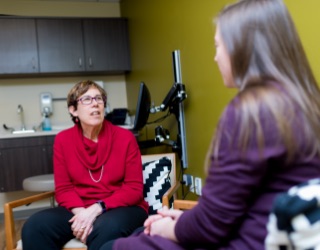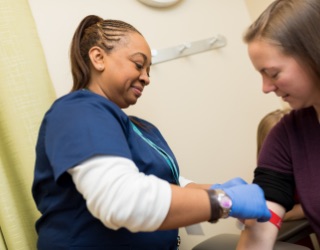Behavior Change In Action: Patient Stories
Through the APC model, care teams have the time and resources to listen to patients, build trusting relationships, and understand their complex care needs. Here are some examples of health coaching in action.
Gaining competence and confidence
Bob Jennings, a veteran UPS driver dealing with 33 years of strain from sitting, standing, bending, and lifting, experienced a fall that injured his spine and led to chronic pain in his back and legs. For Bob, who was also diabetic and overweight, this injury presented a major obstacle to physical movement and stamina.
When Bob visited his care center, his provider connected him with his health coach, who helped him establish health goals and work towards them together through regular communication and small, achievable steps. In Bob’s own words, “We didn’t try to climb Mount Everest the first day.”
Step by step, Bob and his health coach started climbing. And the plan is working. Bob now manages his diabetes with diet and exercise alone and is seeing improvement in his physical stamina.
For Bob, the constant support of a health coach helped him to take ownership of his health journey:
Accountability is everything to me because it just motivates you to achieve your goals. You start seeing some results, then you start getting some competence and confidence — you just feel better and more. You know what I mean? You just feel better about it. ‘Oh, absolutely. I got this.’
BOB JENNINGS, VERA MEMBER

Little goals that changed everything
Robin Hebert, a mother and full-time student working on her masters degree, had already overcome an incredible challenge: recovering from heroin addiction and alcoholism. But she felt defeated by unsuccessful attempts to control her weight. When she visited a care center, she found out she had high blood sugar and high cholesterol and agreed to meet with a health coach.
With the help of her health coach, Robin shifted her thinking towards manageable, achievable goals:
As soon as we started talking and setting these little goals, I just got on board … Everything just kind of started falling into place.
ROBIN HEBERT, VERA MEMBER
Through health coaching, Robin achieved her weight loss goal, transformed her diet, and quit her 25-year smoking habit. She and her health coach even came up with a big-picture plan to save money for another semester of grad school. Health coaching changed Robin’s perception of healthcare:
I’ve never gone to my doctor to talk about stuff, and now I do. Now I call them right away. Because I just like them. It feels like home. It feels like family.
ROBIN HEBERT, VERA MEMBER











